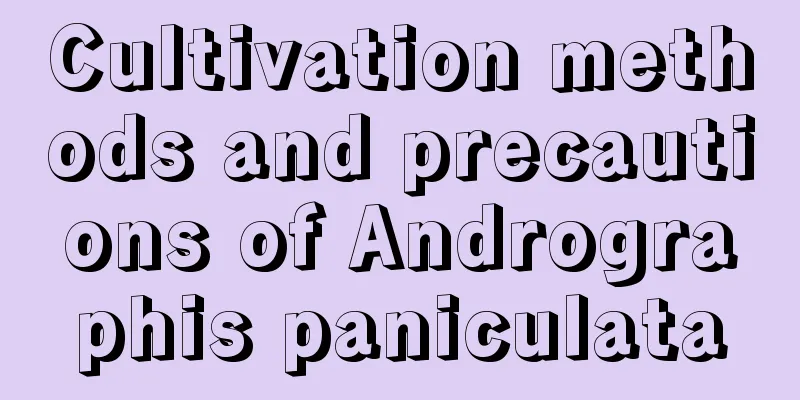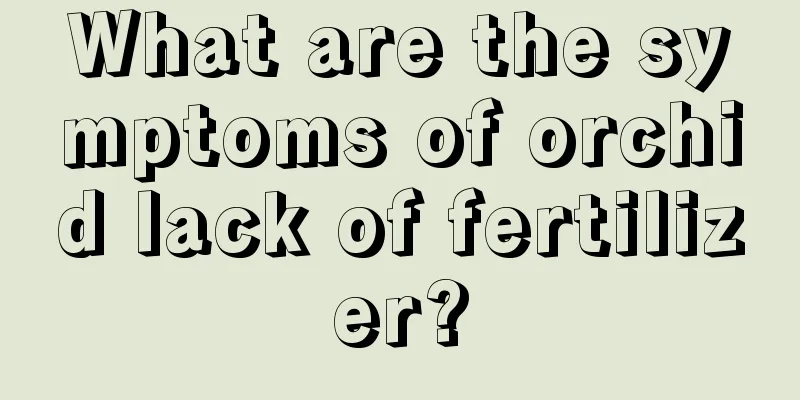Cultivation methods and precautions of Andrographis paniculata

1. Maintenance methods1. Temperature: It is best to keep it in a higher temperature environment, specifically between 25 and 30 degrees. If the temperature is between 15 and 20 degrees, its growth will slow down. In winter, its temperature requirements are still quite strict. Below an octave, its growth stops. If the temperature drops below zero, the entire plant will wither. 2. Light: Andrographis paniculata likes light and has very high requirements for sunlight, especially when it blooms, it must rely on the help of light. Therefore, it is appropriate to keep it under mild light. However, it is also necessary to block the strong light from time to time. 3. Watering: Andrographis paniculata does not like moisture, but when it is growing fast and blooming, the substrate should not be too dry. Just make sure there is no water accumulation and that rainwater is drained out in time. 4. Fertilization: Andrographis paniculata is a variety that likes fertilizer. Not only should there be enough fertilizer in the substrate, but it is also necessary to fertilize once every two weeks or so. Liquid fertilizer works well. 2. Breeding techniques1. Reproduction: Seed propagation can be used, generally the "direct seeding" method is used. In September or October, the fruits need to be collected and the seeds taken out. Before sowing, soak the seeds in warm water to accelerate germination. The specific time for sowing can be in March or April. After sowing, keep the humidity between 70 and 80 percent and place in a cool location. 2. Pruning: Especially its branches and leaves, which need regular repair. Generally speaking, the main task in spring is topping and promote branching. Furthermore, dry, diseased, or insect-infested plants need to be cut off in time to avoid infecting other parts. 3. Problem diagnosis and treatment1. Disease: A common disease is "damping-off disease". In addition to using drugs such as carbendazim, you also need to water less and reduce soil moisture. Then there is the common "cataplexy", so you need to pay attention to ventilation and control the temperature. 2. Pests: There are "cotton bollworm", "mole cricket" and so on, which can be sprayed with insecticide. IV. Other issues1. Toxicity: In fact, it contains a harmful ingredient. However, its toxicity is relatively low and it will not cause any harm if not accidentally ingested. 2. Can it be kept at home? Yes, as long as you pay a little attention to its toxicity. |
<<: Cultivation methods and precautions of peony
>>: Ginseng cultivation methods and precautions
Recommend
When is the best time to prune northern grapes in winter? How to prune them?
1. Winter pruning time The timing of winter pruni...
The difference between Ningzhilian and Raul
Different leaves Raul's leaves are rounder an...
Diseases and control methods of Areca palm
Areca palm leaf blight symptom Areca palm leaf bl...
Is planting honeysuckle profitable? The cost and profit of planting one acre
Is it profitable to grow honeysuckle? Honeysuckle...
The growth environment and local conditions of Setaria viridis
The growth environment and conditions of Setaria ...
How to water the green radish
Tips for watering green radish Pothos belongs to ...
The process of sunflower germination
The process of sunflower germination Sunflower is...
How to water gardenias in winter
1. Watering time When watering it in winter, you ...
How to water bamboo
Tips for watering bamboo Bamboo needs sufficient ...
What soil is suitable for roses?
1. Acidic soil Roses are suitable for acidic soil...
The sprouted yam, placed in a flowerpot, actually climbed all over the wall and produced yam beans.
Planting Yams with Yam Sticks Step 1 The yam stic...
What's the matter with the flowers not blooming?
1. Lack of fertilizer If there is a lack of ferti...
Feng Shui of Cactus Placement
1. Feng Shui Effect Cactus is also a plant relate...
How to cultivate snow lotus
1. Maintenance methods 1. Temperature: Snow lotus...
How to plant drug addict grass seeds
Introduction of drug addict grass seeds Generally...









